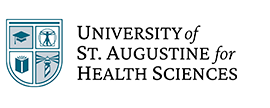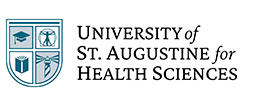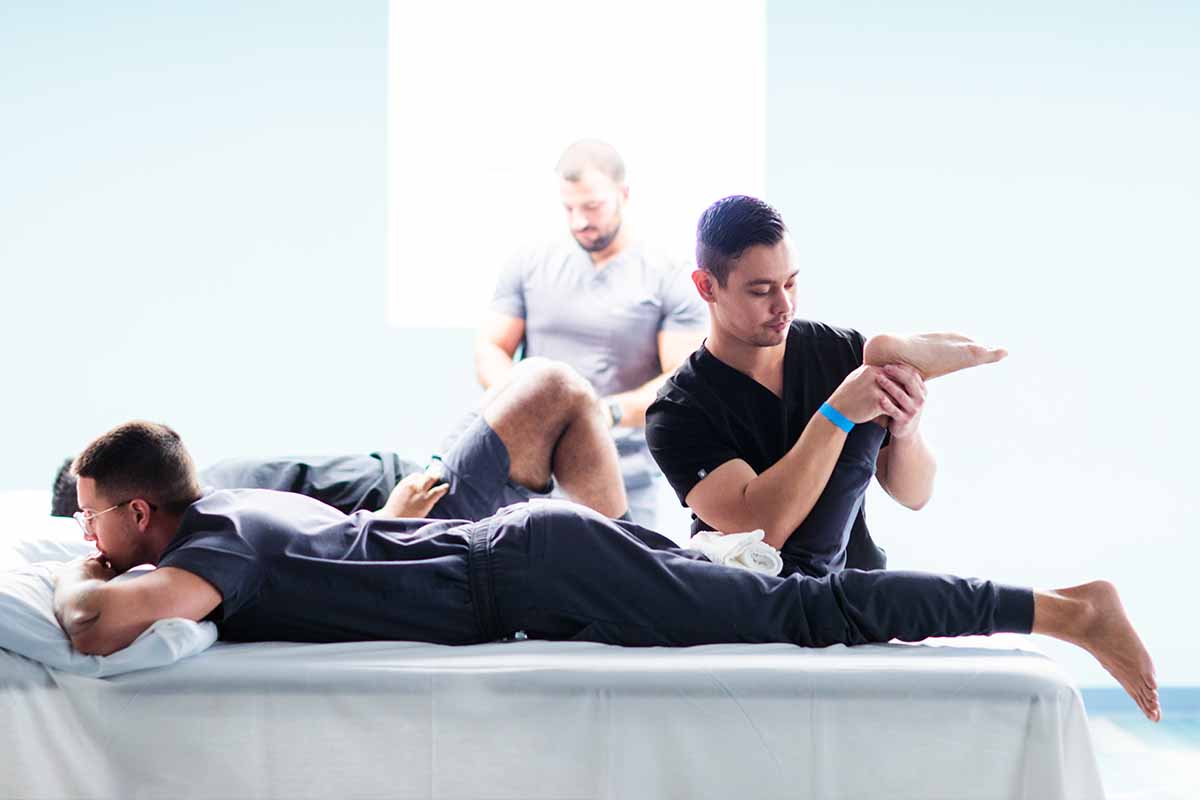
In the United States today, there is a persistent lack of diversity among healthcare professionals. It’s critical that healthcare organizations improve diversity to ensure that people of all socioeconomic backgrounds, races, ethnicities, cultures, sexual orientations, religions, and genders are represented in the healthcare workforce.
Doing so has a positive impact not only on the organization itself, but also on the individual patients and wider communities.
This post discusses the importance of diversity in healthcare and highlights the key benefits of increased representation for both providers and patients.
How Diverse Is Healthcare Today?
Most active physicians today are white men and more nursing and rehabilitative positions are held by women—in turn, people of color are still vastly underrepresented in these areas. It’s important for employers to understand current healthcare demographics and the barriers and challenges faced by women, people of color, and LGBTQ people in the healthcare workforce, which we’ll cover more below.
Demographics of Healthcare Professionals


According to the Association of American Medical Colleges, only about 36% of active physicians are female. Only about 5% of physicians identify as Black or African-American, despite this group making up 13% of the U.S. population, and fewer than 6% of physicians identify as Hispanic, despite Hispanics making up about 19% of the U.S. population. ((U.S. Census Bureau, “Quick Facts,” July 1, 2019: https://www.census.gov/quickfacts/fact/table/US/PST045219)) However, 28% of physicians and surgeons in the United States are immigrants, with doctors from India and China making up the largest groups. ((Jeanne Batalova, “Immigrant Health-Care Workers in the United States,” Migration Policy Institute, May 14, 2020: https://www.migrationpolicy.org/article/immigrant-health-care-workers-united-states-2018#)) This speaks to issues of systemic oppression: People from minority groups that have been oppressed for generations in the United States are less represented as physicians than are immigrants of color.
Some healthcare professions, such as nursing, physical therapy, and occupational therapy, are female-dominated. However, the vast majority of nurses, PTs, and OTs are white (non-Hispanic). About 91% of nurse practitioners and nurse midwives are female, but only one-quarter do not identify as white. ((Data USA, “Nurse Practitioners & Nurse Midwives”: https://datausa.io/profile/soc/nurse-practitioners-nurse-midwives#demographics)) Similarly, 69% of physical therapists are female, but only 22% do not identify as white; ((Data USA, “Physical Therapists”: https://datausa.io/profile/soc/physical-therapists#demographics)) 84% of occupational therapists are female, and only 17% do not identify as white. ((Data USA, “Occupational Therapists”: https://datausa.io/profile/soc/occupational-therapists#demographics)) In these professions, men are in the minority and may face discriminatory attitudes—especially in nursing, where stereotypes about “male nurses” abound.
Challenges Faced by Underrepresented Groups
People who are part of gender, racial, religious, and sexual minority groups may face obstacles in the healthcare workforce, including discrimination, fewer job offers, and uneven promotion opportunities—as well as challenges accessing the quality education they need to enter the field in the first place.
Women are underrepresented at every job level, and the underrepresentation of women in senior management-level positions cannot be explained by attrition. ((McKinsey & Company, “Women in the Workplace 2020,” Sep 30, 2020: https://www.mckinsey.com/featured-insights/diversity-and-inclusion/women-in-the-workplace)) That is, women are not leaving their companies or intending to leave the workforce at a higher rate than men.
For every 100 men who are promoted to managerial positions, only 85 women are promoted. ((Ibid.)) This gap is even larger for Black women and Latinas, of which only 58 and 71, respectively, are promoted for every 100 men.
Black and Hispanic people are underrepresented in science, technology, engineering, and math (STEM) professions. A majority of STEM workers believe that limited access to quality education is a major reason for this underrepresentation. However, 25% of U.S. STEM workers are foreign-born. ((Walter Ewing, “Foreign Workers Make Up 25 Percent of the Entire STEM Workforce,” Immigration Impact, Jun 14, 2017: https://immigrationimpact.com/2017/06/14/foreign-workers-percent-stem-workforce/#.X8hWE2hKjIU))
Why Is Cultural Diversity Important in Healthcare?
Of course, people from underrepresented communities also face challenges in receiving equitable healthcare.
“Our nation’s health disparities increasingly fall along economic and racial lines,” says Kysha Harriell, PhD, LAT, ATC, who co-teaches the Cultural Competence in Healthcare course within the Master of Health Administration program at the University of St. Augustine for Health Sciences (USAHS). The COVID-19 pandemic has exploited these existing health disparities, disproportionally impacting communities of color. Pacific Islander, Latino, Indigenous, and Black Americans all have a COVID-19 death rate of double or more that of White and Asian Americans (APM Research Lab, “The Color of Coronavirus: Covid-19 Deaths by Race and Ethnicity in the U.S.,” March 5, 2021: https://www.apmresearchlab.org/covid/deaths-by-race). Given this harrowing reality, combined with the positive energy of current social movements around correcting systemic iniquities, it’s a particularly important time for health administrators to develop cultural competency.
Dr. Harriell defines cultural competence in healthcare as “a set of behaviors, knowledge, and skills that help administrators and practitioners respond to cultural issues relating to patients. So when staff are in situations with people from different cultural backgrounds, they recognize that they are—and they have tools to respond, with the goal of providing respectful and competent care.” These tools will help create culturally competent administrators who are skilled at collaborating with a diverse team of colleagues and ensuring respectful and equal treatment of all patients.
Risks of Lack of Diversity in Healthcare


It has been demonstrated that, broadly speaking, people with diverse racial and ethnic identities have unfavorable social determinants of health such as a lack of access to high-quality education, housing, and food. ((Lakshmi Nair et al., “Cultural Competence and Ethnic Diversity in Healthcare,” May 2019: https://www.ncbi.nlm.nih.gov/pmc/articles/PMC6571328/)) There is also increasing evidence that people of color experience greater incidence and more severe cases of diseases compared to white people in the United States. ((Jayoung Kim, “Equality, Inclusion, and Diversity in Healthcare During the COVID-19 Pandemic,” Jun 30, 2020: https://www.ncbi.nlm.nih.gov/pmc/articles/PMC7332825/)) These disparities stem from a complex system of racial inequality that has developed over generations and that, among other issues, makes access to healthcare resources more difficult or even impossible.
Evidence suggests that most healthcare providers (across racial groups) have implicit racial/ethnic bias, meaning that they have more positive attitudes toward white people and more negative attitudes toward people of color, without being aware of these attitudes. People of color are also generally less satisfied with their interactions with healthcare providers and may not receive the same quality of care that White patients receive.
Furthermore, where there is a lack of gender and ethnic representation, there is also a lack of diverse thought. This can limit the creativity and breadth of ideas and perspectives within organizations.
Benefits of Diversity in Healthcare


President Barack Obama stated in a 2016 presidential memorandum, “Research has shown that diverse groups are more effective at problem solving than homogenous groups, and policies that promote diversity and inclusion will enhance our ability to draw from the broadest possible pool of talent, solve our toughest challenges, maximize employee engagement and innovation, and lead by example by setting a high standard for providing access to opportunity to all segments of our society.”
Diversity in healthcare has measurable benefits for both healthcare professionals and the communities they serve. Some of the key advantages of increasing the diversity of healthcare policies within organizations include:
- Increased provider comfort levels: Studies show that students who have trained at diverse schools are more comfortable treating patients from ethnic backgrounds other than their own.
- Boosted creativity and innovation: A wide range of perspectives can lead to better solutions. ((Andra Picincu, “What Are the Advantages of a Diverse Workforce?” Updated July 6, 2020: https://smallbusiness.chron.com/advantages-diverse-workforce-18780.html))
- Enhanced understanding of value sets: A more diverse group of healthcare professionals will have a better understanding of colleagues’ and patients’ different belief systems. ((Damani A. Piggott, “Promoting Inclusion, Diversity, Access, and Equity Through Enhanced Institutional Culture and Climate,” The Journal of Infectious Diseases, Aug. 20, 2019: https://academic.oup.com/jid/article/220/Supplement_2/S74/5552355))
- Improved communication: Not only may some patients be able to more effectively communicate with providers who speak their language, but they might also receive better care. Patients with limited English proficiency experience higher rates of medical errors and worse clinical outcomes.
- Increased patient trust: Patients of color may be more likely to seek out care. A Stanford University study found that Black male patients who were treated by Black doctors were more likely to seek preventative services than those who were treated by non-Black doctors.
- Reduced health disparities: Improved cultural competence and ethnic and racial diversity can help to alleviate healthcare disparities and improve healthcare outcomes in diverse patient populations. ((Nair, “Cultural Competence.”))
- Improved employee engagement and retention: People take pride in working for companies that are making a positive impact in society.
- Improved bottom line: “It’s been shown that more diverse organizations are more successful in terms of their social reputation, the happiness and loyalty of their employees—even financially,” says Dr. Harriell. According to a 2019 McKinsey study, racial and gender diversity in business is correlated with better financial performance (Sundiatu Dixon-Fyle et al., “Diversity Wins: How Inclusion Matters,” McKinsey & Co., May 19, 2020: https://www.mckinsey.com/featured-insights/diversity-and-inclusion/diversity-wins-how-inclusion-matters).
How can healthcare promote cultural diversity?
Dr. Harriell says that for health administrators, promoting cultural diversity can mean adapting a clinic’s hours of operation to improve patient access, such as offering care beyond a 9-to-5 schedule in a blue-collar town. Or it can be about adjusting services offered to better meet the needs of the patient population. It can mean hiring culturally diverse staff, hanging images of diverse people on the walls of the facility, and revising forms to ask about gender identity and pronouns. Administrators play a pivotal role, she says, in removing the biases in policies and procedures, while instituting new policies that promote equality. They can also help to create a workplace culture focused on eliminating racial disparities, respecting each patient’s cultural and religious beliefs, and celebrating differences.
Importance of Promoting Diversity in Health Sciences Education
It’s critical that organizations commit to increasing representation in healthcare in order to improve patient outcomes, build stronger communities, and increase employee satisfaction.
Making healthcare education more accessible and encouraging diverse applicants helps reduce barriers to higher education opportunities. Improving access to higher education also enables diverse individuals to reach new career heights and achieve higher income levels. ((U.S. Department of Education, “Advancing Diversity and Inclusion in Higher Education,” Nov. 2016: https://www2.ed.gov/rschstat/research/pubs/advancing-diversity-inclusion.pdf))
It’s also critical for colleges and universities to create inclusive learning environments, empower students, and spread awareness. Support services, such as mentorship programs, can increase the odds that students remain enrolled in school and achieve their academic goals.
Click the button below to learn more about the importance of promoting diversity in academic and workplace environments.
USAHS is committed to creating a more inclusive university environment. In a 2019 student survey, 49% of our students identified as white, 15% as Hispanic (of any race), 13% as Asian, and 7% as Black; 68% of students were women. ((“2020 Annual Factbook,” USAHS Office of Institutional Research, April 2020. )) The University’s Inclusion, Diversity, Equity and Access (IDEA) Committee works to advance racial equity and build a long-term strategy where all students, faculty, and staff feel a sense of belonging.
“USAHS seeks to be a force for good in our communities and in the field of health sciences,” says Ryan W. Davis, EdD, co-chair of IDEA. “One way the IDEA Committee is doing this is by ensuring that topics of inclusion, diversity, equity, and access are included in faculty, student, and staff training. By providing educational opportunities on these fundamental topics, we are preparing our students to be exemplary future practitioners.”
IDEA co-chair Keisa Boykin, OTR/L, DHSc, MBA/HCM, adds, “It is a privilege to teach the next generation of healthcare providers. Education must replicate the world as closely as possible to best prepare our students for clinical practice. It should include equitably working with diverse populations and developing an awareness of cultural differences. As an educator and occupational therapist, I want to know that our students are prepared to provide quality inclusive treatment without disrespecting who our clients are and the experiences they bring with them.”
Infographic Sources:
American Council on Education, “On the Importance of Diversity in Higher Education,” June 2012: https://www.acenet.edu/Documents/BoardDiversityStatement-June2012.pdf
Christie Smith and Stephanie Turner, “The Radical Transformation of Diversity and Inclusion: The Millennial Influence,” Deloitte University, 2015: https://www2.deloitte.com/content/dam/Deloitte/us/Documents/about-deloitte/us-inclus-millennial-influence-120215.pdf
Glassdoor, “What Job Seekers Really Think About Your Diversity and Inclusion Stats,” Nov. 17, 2014: https://www.glassdoor.com/employers/blog/diversity/
Industrial Distribution, “Survey: 61% of US Employees Have Experienced or Witnessed Discrimination at Work,” Oct. 23, 2019: https://www.inddist.com/operations/news/21093660/survey-61-of-us-employees-have-experienced-or-witnessed-discrimination-at-work
People Management, “Diversity Drives Better Decisions,” Oct. 23, 2017: https://www.peoplemanagement.co.uk/experts/research/diversity-drives-better-decisions
PR Newswire, “More Than Half of Workers Say Their Company Has Failed at Creating a Diverse Workplace, But New Data Shows How Diversity Affects People of Color’s Ability to Succeed at Work,” Oct. 22, 2020: https://www.prnewswire.com/news-releases/more-than-half-of-workers-say-their-company-has-failed-at-creating-a-diverse-workplace-but-new-data-shows-how-diversity-affects-people-of-colors-ability-to-succeed-at-work-301157510.html
U.S. Department of Education, “Advancing Diversity and Inclusion in Higher Education,” Nov. 2016: https://www2.ed.gov/rschstat/research/pubs/advancing-diversity-inclusion.pdf
Vivian Hunt et al., “Why Diversity Matters,” McKinsey & Company, Jan. 1, 2015: https://www.mckinsey.com/business-functions/organization/our-insights/why-diversity-matters









